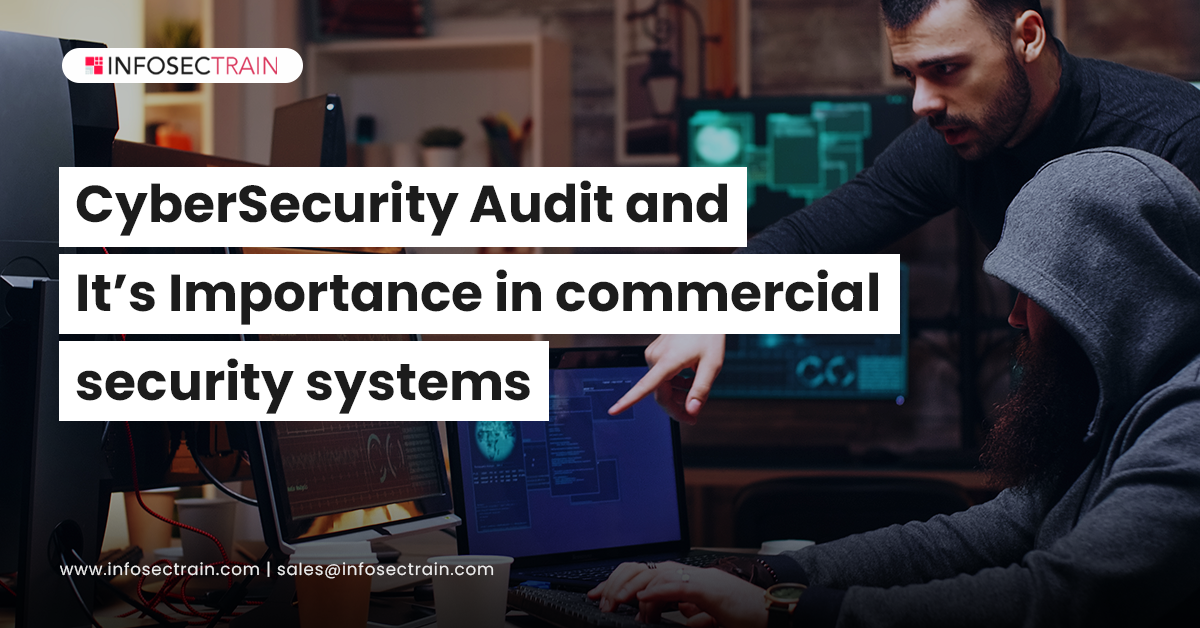CyberSecurity Audit and Its Importance in Commercial Security Systems
A CyberSecurity Audit is an independent and systematic examination of the CyberSecurity Infrastructure of an organisation. This type of audit makes sure that the security policies, procedures, and controls are working correctly and efficiently.

If you are the owner of any organisation, just think: when was the last time you conducted a cybersecurity audit? No! Not that simple scan, I am talking about an in-depth and complete audit of cybersecurity management. Don’t remember? If so, you are likely to be a victim of cyberattacks. Cyber incidents are on the rise throughout the world, and there is no sign that they will end soon. So you have to conduct cybersecurity audits on time.
The primary purpose of this cybersecurity audit is to access identity and compliance vulnerabilities. A cyber-security audit will not only help an organisation avoid fines but also keep up with cybercriminals. An on-site audit is usually conducted by a third-party audit company that checks the configuration of your software. They may run tests to analyse your network and identify the security gaps.
Best practices for cybersecurity audits:
A few steps to perform a cybersecurity audit in the best way are:
1. Define the objectives: Before taking the first step to perform the security audit, you must define the goals behind this audit. When you do it, you can complete the audit process very efficiently because you know what to do and what to expect from the entire process. You can define the objectives and goals by preparing a simple cybersecurity audit checklist like do you want to audit – business operations, digital infrastructure, or any other? Are you concerned about certain cybersecurity risks? Do you desire to administer cybersecurity audits by third-party business people or the internal team of the company? Etc.
2. Plan and collect the information before performing the audit: After defining the objectives, the most important thing you must do is plan how to perform the security audit? Either by hiring third-party vendors or with the in-house team, you have to collect the information before starting the process.
If you are hiring third-party vendors, ask them what information they need to perform the audit. And, if you are willing to perform the audit with the in-house team, you have to decide what kind of tools and technologies must be used along with the roles and responsibilities of every member of the audit team.
3. Bring the whole team on board: This is one of the basic yet the most ignored steps while performing a cybersecurity audit. All of the employees in the organisation must be aware of the upcoming audit.
It is important to make sure that all organisation members understand the importance of cybersecurity solutions, how they can maintain all of these at their level, and what type of risk is associated with digital infrastructure in the organisation.
This will encourage them to take a closer look at the security aspects of the organisation. Moreover, when every potential employee knows about the audit, it becomes easier to allocate resources, such as time, money, etc., efficiently.
4. Do the audit: This is the core part. Performing an audit involves many actions like scanning user access rights, databases, file-sharing services, system configuration, and many more.
The auditing process also includes additional tasks like discussing the network structure, physical inception of devices, and security policies with employees. Once the auditing process is completed, you have to document all the findings and outcomes of the audit in a report.
5. Analyse the report and take the relevant actions: After preparing the report, which includes all the findings and outcomes of the audit, conduct a group meeting and summarise the outcomes.
Once your team knows what happened, you must take the necessary actions. After an audit, if a vulnerability in the organisation’s digital infrastructure is discovered, you will need to fix it. In a similar manner, if the system doesn’t meet regulatory compliance, you’re required to bring it into compliance.
The importance of cybersecurity in commercial security systems:
There are many commercial security systems, so let me tell you what they are and what happens if there is no cybersecurity in these systems and you will know the importance of a cybersecurity audit.
Fire alarms: Fire alarms are devices incorporated in homes, malls, temples, and many crowded places. This device gives a signal when there is smoke in the room so that the people there can escape the danger. If there is no proper cybersecurity, anyone can hack the alarm and cause fatal damage to that place.
CCTV cameras: I think everyone is aware of CCTVs. With the help of CCTVs, we can find the details of any crime, or we can check what has happened in our absence. Without cybersecurity, anyone can hack the CCTV cameras and turn them around while doing a crime or destroy it completely so that there will be no evidence of any crime happening.
Cybersecurity with InfosecTrain:
InfosecTrain is the leading provider of consultancy services, certifications, and training in information technology and cyber safety. Our accredited and skilled trainers will help you understand cybersecurity and information security and improve the skills needed. Not only do they give you the best training, but they will also expose you to new challenges that will be very helpful to you in the coming future. Join InfosecTrain to get the best Cybersecurity training.







 1800-843-7890 (India)
1800-843-7890 (India) 
